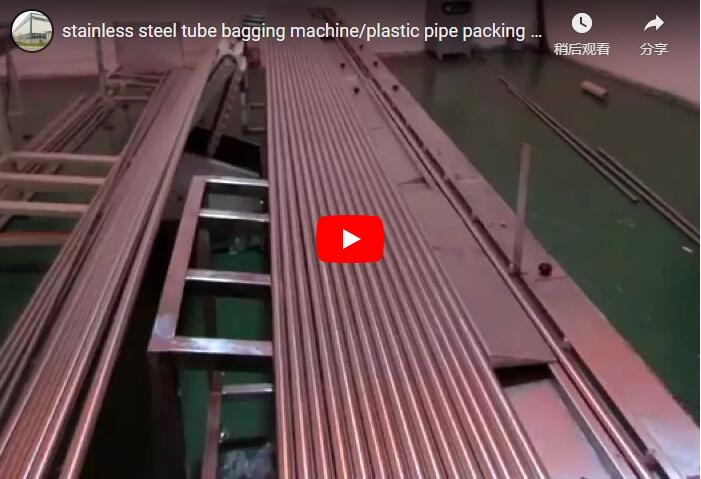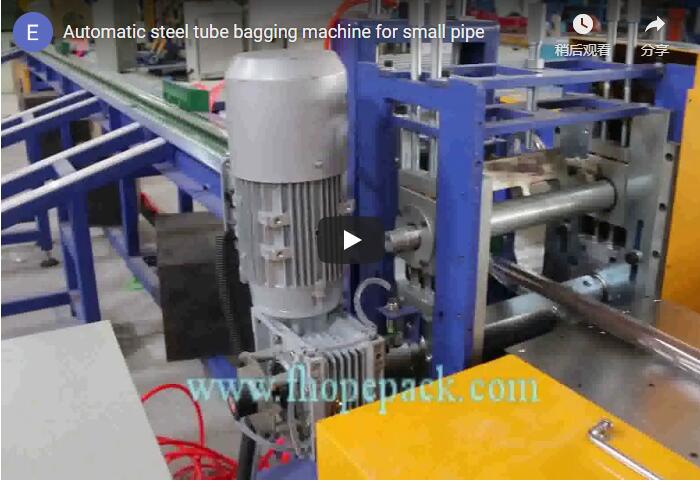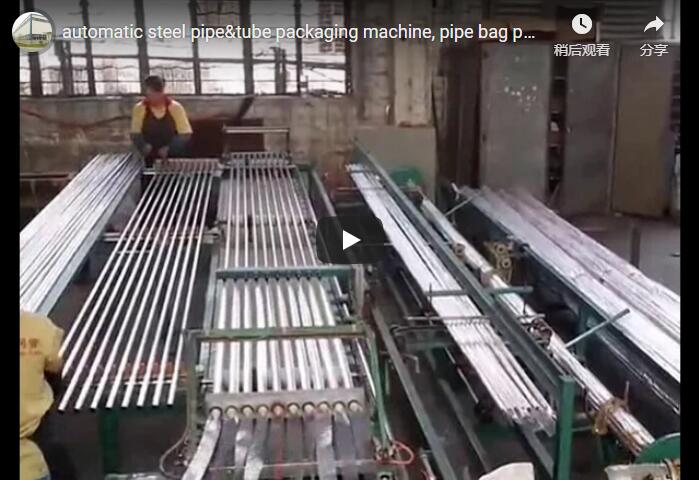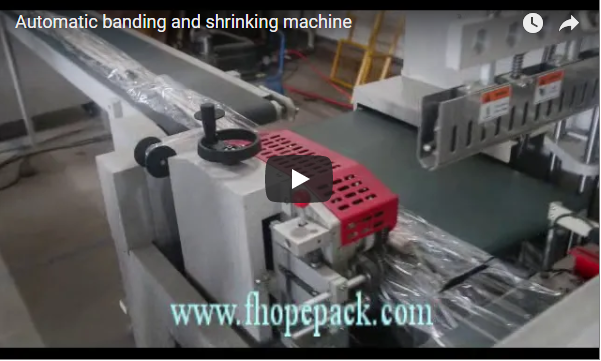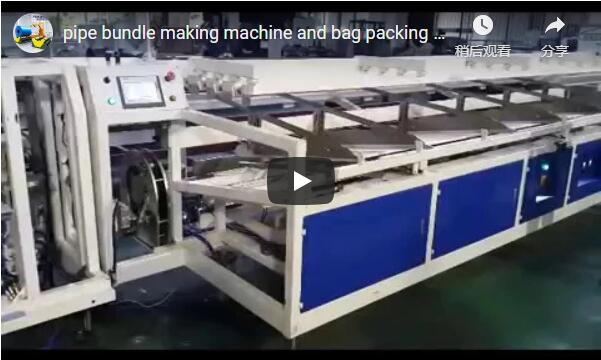Streamlining PVC Pipe Handling: A Technical Look at Automated Strapping and Bagging Lines
Handling and packaging large volumes of PVC pipes efficiently and consistently presents a significant challenge in manufacturing and distribution environments. Manual processes are often labor-intensive, prone to inconsistencies, and can pose ergonomic risks. Automated systems, specifically online pipe strapping and bagging lines, offer a robust solution by integrating these crucial packaging steps directly into the production flow. This article delves into the functionality, technical specifications, and operational considerations of these automated lines, aligning with an instructional focus.
1. The Need for Automation in Pipe Packaging
Moving away from manual or semi-automated processes addresses several key operational pain points:
- Increased Throughput: Automated lines operate continuously at speeds often unattainable manually, directly boosting production output.
- Consistency and Quality: Machines apply strapping and bagging materials uniformly, ensuring secure and professional-looking bundles every time, reducing transit damage.
- Reduced Labor Costs: Automating repetitive tasks frees up personnel for higher-value activities and reduces direct labor expenditure per unit.
- Improved Safety: Eliminating manual handling of heavy or awkward pipe bundles minimizes risks of strains and injuries.
2. Core Components and Functionality
An integrated pipe strapping and bagging line typically consists of several key modules working in sequence:
- Infeed Conveyor System: Receives pipes from the extrusion line or a buffer zone. Often includes sensors for pipe detection and spacing.
- Pipe Alignment and Counting Station: Arranges pipes into the desired bundle configuration (e.g., hexagonal, square) and counts the correct number of pipes per bundle. This may involve vibration tables, guiding arms, or star wheels.
- Automatic Strapping Unit(s): Applies plastic straps (usually PP or PET) around the formed bundle at pre-set locations. This includes strap feeding, tensioning, sealing (heat or friction weld), and cutting. Multiple heads may be used for faster cycle times or multiple straps per bundle.
- Bundle Transfer to Bagging: Moves the strapped bundle into the bagging station, often via driven rollers or belts.
- Polyethylene Film Bagging Unit: Encases the strapped bundle in a PE film sleeve. This involves dispensing film, creating a bag around the bundle, and often sealing the ends.
- Sealing and Cutting Mechanism: Creates the final seals on the bag (typically heat sealing) and cuts the film to separate the bagged bundle.
- Bundle Ejection/Outfeed Conveyor: Discharges the finished, bagged bundle onto a collection table, roller conveyor, or automated guided vehicle (AGV) system for transport to warehousing or shipping.
- Control System (PLC): The brain of the operation, coordinating the actions of all modules, managing sensors, and providing an interface (HMI) for operators.

3. Key Technical Specifications and Parameters
When evaluating or specifying such a line, several technical parameters are crucial:
- Pipe Diameter Range: The minimum and maximum pipe OD the machine can handle (e.g., 16mm - 250mm).
- Pipe Length Range: The minimum and maximum pipe lengths accommodatable (e.g., 3m - 6m).
- Bundle Configuration & Size: Pre-programmable bundle shapes and pipe counts (e.g., 3x4, 5x6 pipes, max bundle diameter/width).
- Strapping Material: Type (PP, PET), width (e.g., 9mm, 12mm, 16mm), and thickness range.
- Bagging Film: Type (PE tubular film, flat film), thickness (microns), and roll width.
- Throughput/Cycle Time: Rated speed, often expressed as bundles per minute or seconds per cycle (e.g., 2-5 bundles/minute depending on size and complexity).
- Strapping Tension: Adjustable range to suit pipe rigidity and bundle integrity requirements.
- Power Requirements: Voltage, phase, and total power consumption (kW).
- Compressed Air: Pressure (bar/psi) and consumption rate (L/min or CFM) if pneumatic components are used.
- Machine Footprint: Overall dimensions (Length x Width x Height) required for installation.
4. Operational Workflow: Step-by-Step
The typical sequence of operations for an online strapping and bagging line is as follows:
- Pipe Infeed: Individual pipes arrive on the conveyor.
- Counting & Collation: Pipes are counted and guided into the programmed bundle formation at the alignment station.
- Bundle Transfer to Strapping: The completed formation is moved into the strapping zone.
- Strapping Application: The strapping head(s) cycle, applying straps at designated points along the bundle length.
- Transfer to Bagging: The strapped bundle moves into the bagging station.
- Bag Formation & Encasement: PE film is dispensed, formed into a sleeve, and the bundle is pushed or pulled inside.
- Sealing & Cutting: The ends of the film sleeve are sealed, and the bag is cut from the film roll, completing the enclosure.
- Discharge: The finished, packaged bundle is ejected onto the outfeed system.
5. Video Demonstration
The following video demonstrates the operation of such an automated line, showcasing the sequence from pipe collation to final bagged bundle ejection:
6. Implementation and Operational Considerations
Successfully integrating an automated strapping and bagging line requires careful planning:
- Integration: Ensure seamless connection and communication with upstream (extrusion/cooling/cutting) and downstream (palletizing/warehousing) equipment.
- Layout & Space: Allocate sufficient floor space, considering access for operation, maintenance, and material replenishment (strap coils, film rolls).
- Operator Training: While designed for ease of use, operators need training on machine operation, basic troubleshooting, safety procedures, and HMI navigation.
- Maintenance: Adhere to the manufacturer's recommended preventive maintenance schedule for lubrication, wear part inspection (strapping head components, sealer bars, cutting blades), and sensor checks to ensure long-term reliability.
- Material Handling: Plan for efficient loading of strap coils and large PE film rolls, which can be heavy.
7. Conclusion
Online PVC pipe strapping and bagging lines represent a significant step forward in packaging automation for pipe manufacturers and distributors. By integrating bundle formation, strapping, and bagging into a single, continuous process, these systems deliver substantial improvements in throughput, packaging consistency, labor efficiency, and workplace safety. Understanding the core components, technical capabilities, and operational workflow is key to specifying and implementing a system that meets specific production requirements effectively.

For details on specific configurations of plastic pipe packing lines, you can explore further resources:
https://www.fhopepack.com/Plastic-Pipe-Packing-Line/

